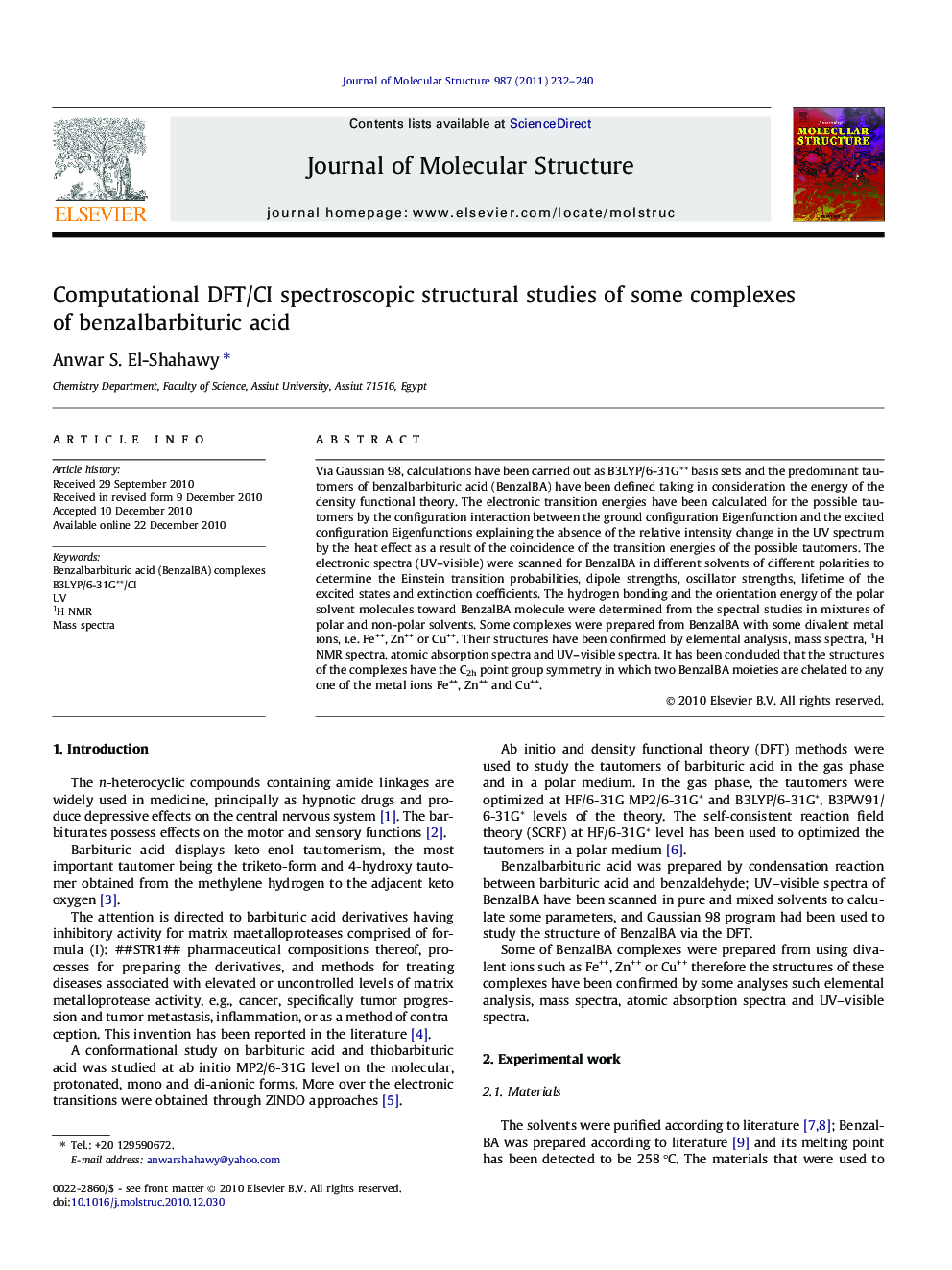| کد مقاله | کد نشریه | سال انتشار | مقاله انگلیسی | نسخه تمام متن |
|---|---|---|---|---|
| 1409646 | 1501827 | 2011 | 9 صفحه PDF | دانلود رایگان |

Via Gaussian 98, calculations have been carried out as B3LYP/6-31G** basis sets and the predominant tautomers of benzalbarbituric acid (BenzalBA) have been defined taking in consideration the energy of the density functional theory. The electronic transition energies have been calculated for the possible tautomers by the configuration interaction between the ground configuration Eigenfunction and the excited configuration Eigenfunctions explaining the absence of the relative intensity change in the UV spectrum by the heat effect as a result of the coincidence of the transition energies of the possible tautomers. The electronic spectra (UV–visible) were scanned for BenzalBA in different solvents of different polarities to determine the Einstein transition probabilities, dipole strengths, oscillator strengths, lifetime of the excited states and extinction coefficients. The hydrogen bonding and the orientation energy of the polar solvent molecules toward BenzalBA molecule were determined from the spectral studies in mixtures of polar and non-polar solvents. Some complexes were prepared from BenzalBA with some divalent metal ions, i.e. Fe++, Zn++ or Cu++. Their structures have been confirmed by elemental analysis, mass spectra, 1H NMR spectra, atomic absorption spectra and UV–visible spectra. It has been concluded that the structures of the complexes have the C2h point group symmetry in which two BenzalBA moieties are chelated to any one of the metal ions Fe++, Zn++ and Cu++.
Journal: Journal of Molecular Structure - Volume 987, Issues 1–3, 22 February 2011, Pages 232–240